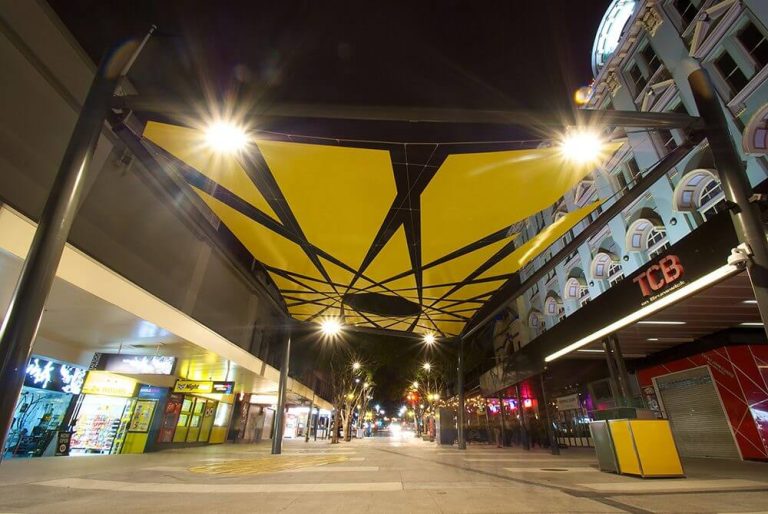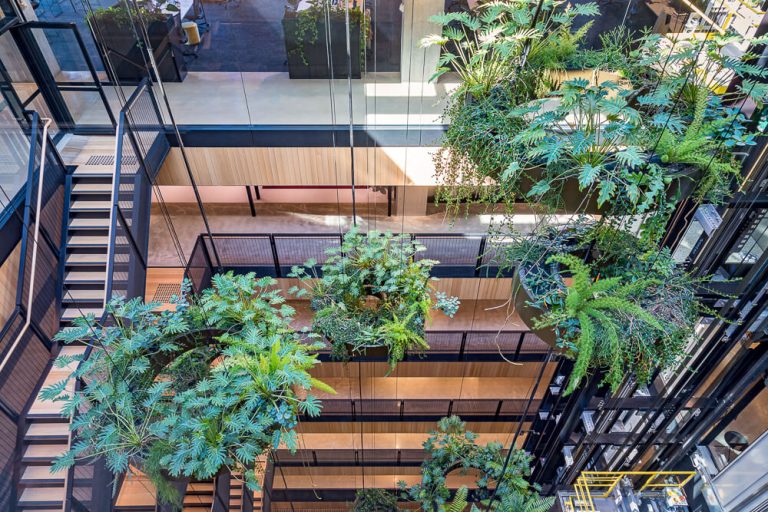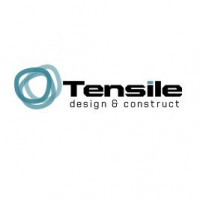Stainless steel tensile structures play an important role in modern architecture when they are used in elevated designs.
Elevated installations such as suspended artworks, hanging planters and catenary lights enhance public spaces and architectural buildings. Precision-engineered tensile materials play a strong supporting role for these types of installations.
Tensile structures can also be used to create robust yet near-transparent safety barriers on elevated bridges, walkways, sky-gardens and balconies.
Here are some real-life examples of these concepts.
Tensile structures in suspended design
When used in suspended designs, tensioned stainless steel cables can provide a support system that is highly robust yet light in appearance. This allows the piece to shine through while the suspension apparatus fades into the background.
Tensile has been involved in a number of these types of installations:
- Chiaroscuro – this overhead outdoor artwork in Sydney tells the story of Italian migration to the Leichardt region during the 20th century, through in a series of colourful light cells. We used 6mm and 8mm stainless steel wire rope cables to build the support structure to suspend the works, some of which weigh hundreds of kilograms. The finished piece makes a bold statement over the street you can hardly miss!
- Echo Orbit – we provided engineering and installation services for this suspended sculpture in Brisbane’s Brunswick Street Mall. The piece is made from geometric metal plates and is suspended via tensioned wire-rope cabling connected to a standing frame. It certainly provides an interesting focal point for people visiting the shopping precinct.
- The Workshop – for this indoor hanging garden under a glass-roofed atrium we created a bespoke suspended transfer frame to support the massive planters. The frame keeps the planters stable and prevents tilting. Now when you look upwards from inside the atrium, the plants appear to be floating in mid-air – a pretty spectacular result!
- Henley Square – tensile wire rope makes an excellent support act for overhead catenary lighting projects such as this one. The cables themselves are almost invisible, especially after dark when the lights come on – suddenly appearing much like stars in the night sky! Some of the cables are exceedingly long (up to 30m), but precise tensioning prevents them from swinging back and forth on windy days.

Tensile structures in elevated construction
When stainless steel mesh such as Jakob Webnet is used to create barriers on elevated structures, the light and elegant appearance of the material enables the structure’s design itself to take centre stage. Webnet also allows for unobstructed views, natural light and airflow.
At the same time, Webnet’s superior strength and robustness meets compliance requirements for fall protection, non-climbability and crowd ratings.
Here are some project examples:
- Emu Plains station – the pedestrian bridge over Old Bathurst Road that leads to the station has a 40mm-aperture Webnet safety barrier. The mesh prevents climbing and falling, while not detracting from the bridge’s sculptural form and appearance.
- Melbourne Uni student precinct – we used 30mm Webnet mesh for the balcony barriers on the student pavilion building. The open-air nature of the mesh facilitates communication and a sense of community – which was a major goal of the project.
When it comes to the use of tensile structures in elevated design, the sky’s pretty much the limit! To discuss a project or to find out more get in touch with our team.

Australia






